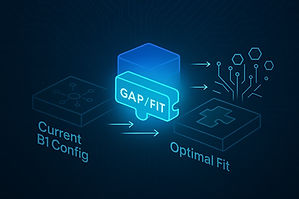SaaS vs Perpetual: A No‑Spin Cost‑Risk Autopsy for SAP Business One

BLUf — Bottom Line Up Front
Generally, choosing SaaS vs Perpetual isn’t about day‑one cost. On pure license math it’s roughly a five‑year break‑even—even before SaaS renewal bumps. The real delta is agency:
-
SaaS: Partner‑locked cloud → fewer future options, closed bids, vendor sets the tech pace.
-
Perpetual: Own the license → open hosting market, competitive pricing, freedom to adopt new tech when it appears.
If partners pitched both models transparently, many firms would finance perpetual licenses to keep SaaS‑style cash flow without surrendering future control.
Cold-Open
Your inbox pings: “SAP Business One Subscription Renewal — 12 % Increase.” Finance gasps, IT shrugs, Ops wonders why the partner scheduled an upgrade at 2 a.m. without asking. Flip the scene: a perpetual shop pays predictable maintenance but shops cloud providers at will. The license model you choose dictates who sets the rules for cost, control, and exit. Let’s dissect both—line by line—before you sign the next five‑year checkbook.
“Comfort hides cost; control demands math.”
License‑Fee Anatomy—Day‑1 Spend
Cost Element
Core Licence
Partner Cloud Runtime¹
SAP Annual Maintenance
Upgrades
SaaS Subscription
Annual subscription (12‑month commit)
Required—partner controls instance
Bundled inside sub
Included—partner timetable
Perpetual Purchase
One‑time licence CAPEX
Optional—partner, hyperscaler, or on‑prem
20 % of list (optional after Year 1)
Included—your timetable
¹ SAP policy forbids self‑hosting subscription licenses. Runtime lives in a partner cloud you don’t control, and that fee is separate from the license line on their invoice.
Rule‑of‑thumb break‑even: License spend crosses ~Year 5—even before any annual SaaS price hikes. Add CPI‑level uplifts and the cross‑over hits sooner.
What SaaS Really Buys You (and What It Locks)
Dimension
Licence Ownership
Environment Control
Hosting Cost Market
Patch Calendar
Exit Path
SaaS Subscription
Rent—use rights vanish if payment stops
Partner‑managed cloud only
Closed bid — current partner only
Partner decides
Lift-and-shift only to another SAP subscription partner cloud. If no partner offers the setup you need, you’re effectively stuck.
Perpetual Purchase
Own—keep running even if maintenance lapses
Any: partner cloud, hyperscaler, or on‑prem
Competitive bids; new tech options as they emerge
Customer decides
Lift-and-shift to any host—partner, hyperscaler,
or on‑prem—with no new licences or
re‑implementation
Renewal Risk—the “Nuisance” That Doubles Costs
Model
SaaS Subscription
Perpetual Maintenance
Typical Annual Uplift
8‑15 %
CPI (~3 %)
Rule‑of‑72 Doubling Time
5–9 years
24 years
Seat creep inflates SaaS even faster—ARR balloons while head‑count drifts.
Five‑Year TCO Snapshot (30 Users — Same Cloud Cost Either Way)
Year
1
3
5
7
SaaS Cumulative
Licence subscription only: $120 k
Includes 10 % renewals: $360 k
$600 k
$840 k
Perpetual Cumulative
Licence capex + same cloud fee: $160 k
Maintenance @3 % CPI: $220 k
$290 k
$390 k
Delta
SaaS wins (‑$40 k)
Gap narrows
Perp ahead (‑$310 k)
Perp +$450 k advantage
Cloud runtime cost is held constant for both models.
The only moving pieces are license rental vs ownership and their respective renewals.
Assumes 10 % SaaS uplift and 3 % maintenance CPI for illustration.
Hardware refresh Year 6 is equal in both scenarios.
¹ SAP policy forbids self‑hosting subscription licences. Runtime lives in a partner cloud you don’t control, and that fee is separate from the licence line on their invoice.
Rule‑of‑thumb break‑even: Licence spend crosses ~Year 5—even before any annual SaaS price hikes. Add CPI‑level uplifts and the cross‑over hits sooner.
What SaaS Really Buys You (and What It Locks)
SaaS isn’t cheaper hosting—it’s a financing wrapper plus contractual handcuffs around runtime.
Renewal Risk—the “Nuisance” That Doubles Costs
DIY 90‑Day Decision Framework
-
Criticality Map – Which flows break if partner patches tonight?
-
Seat Volatility – Growth vs contraction forecast.
-
Data Gravity – BI, EDI, or WMS at DB level?
-
Exit Cost – Get the export + re‑licence fees in writing.
-
Run the Calculator – Plug real licence & cloud quotes into our spreadsheet.
-
Score Intangibles – IT labour, audit time, risk dollars.
If SaaS wins by <10 %, perpetual usually pays more profit long‑run.




.jpg)
.png)
